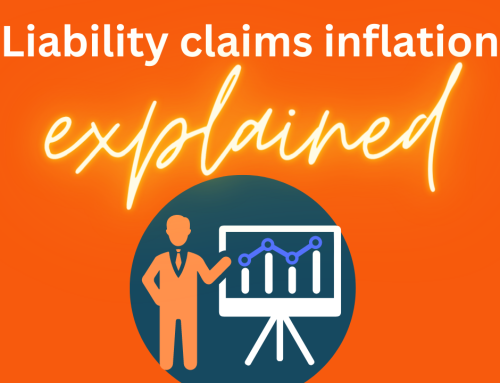There is a lot of talk in the insurance industry about “hardening markets”. But, what does it mean, why has it happened, what impact does it have on insurance policyholders, who is it most affecting and what action can you take to manage the changes?
What is a hard market?
Over the last 10 years the insurance industry has been a soft market. This is characterised by:
- Low premiums
- Lots of competition from insurers for your business
- A buyers’ market, with lots of options due to insurer saturation.
A combination of many factors have led to a ‘hardening market’ for some lines of business. This is characterised by:
- Rising premium costs
- Increasing excess limits
- Less availability of higher indemnity limits
- More restrictions on policies
- Less competition due to fewer insurers.
Why has the market hardened?
Rising premium costs
Insurance is based on a principle that ‘the losses of the few are paid for by the premiums of the many’.
Over the last few years, however, there has been a particularly high number of unexpected losses which have exceeded the insurers estimates when they set the premiums. This includes:
- Business Interruption costs due to Covid-19.
- Significant storm and flood damage in 2020
- Legislation changes (the Ogden Rate) in 2017 increasing personal injury payouts
- Impact of Grenfell Tower Disaster on engineering and construction
- Solvency II requirements introduced in 2016, obliging insurers to build larger financial reserves in order to legally trade
- Stock market depreciation. Historically this has been used to subsidise premiums.
This leaves insurers with a shortfall to recoup by increasing premiums.
Increasing excess limits
Higher excesses reflect the fact that insurers want to take on less risk. Instead of agreeing to cover losses from £500 and above, for example, an insurer may accept only to cover losses from £750 and above. Insurers believe this encourages policyholders to manage risk and act prudently. It also reduces the number of claims that an insurer will see, effectively removing smaller claims from their radar.
Less competition due to fewer insurers
Several factors have resulted in fewer insurers operating in the UK market, which leads to greater demand and higher premiums:
- Some insurers relocating outside the UK due to Brexit
- Some insurers withdrawing from certain markets due to recent high losses and high risks- eg Grenfell Tower Disaster and Covid-19
Following Brexit some insurers relocated outside of the UK and underwriting agencies lost their capacity as the insurers exited,
Less availability of higher indemnity limits
It is now harder to get higher limits of indemnity on some liability policies. This is partly due to alack of capacity within the market, and partly due to a change in risk appetite. There are a number of high-profile events such as Grenfell and now claims relating to Covid-19 that are so potentially large that underwriters are wary of offering high limits of indemnity. We’re also seeing a switch from “any one claim” limits to “aggregate” limits – this limits an insurer’s potential loss throughout a period of insurance but means that policyholders receive less cover.
Impact of COVID-19 on hardening market
With many underwriters working from home, juggling caring commitments and home learning with professional expectations, underwriting decisions are often taking longer. In addition, some underwriters have been drafted into claims handling teams, resulting in less insurer capacity to manage quotes and policies. As well as leading to increases in premiums, it can also lead to frustration and impatience!
Who is most affected?
We’re seeing the biggest impact of these challenges on liability premiums, especially professional indemnity. Some professions have seen marked increases in premiums and excess, and include:
- Engineers, particularly structural and fire engineers
- Architects
- Surveyors
- Design & Construct
- Project Managers
- Insurance Brokers!
Other affected insurances include:
- Haulage Fleets
- Motor Trade
- Employers Liability
- Public Liability
If you work in these sectors, or buy these products, you are likely to see less favourable terms than you are used to – even if you’ve never had a claim! These premiums are not necessarily a reflection on you and your organisation: they reflect the changes within the broader marketplace, issues affecting your profession and how the insurance market functions.
How to reduce the impact of a hardening market on your organisation
What CAN you do about it? More than ever underwriters will be looking for favourable factors in assessing terms. Risk managements tools and strategies, external accreditations and investment in staff training could all be ways to show underwriters that your organisation is a more favourable risk. The bigger your organisation, the more important these factors will be. It might also be worth reviewing the profitably of carrying out high risk activities which generally attract higher premiums and excesses.
Give us a ring to discuss what steps you could take to more effectively manage your risks at this time of change.
There are still competitive quotes to be had, but it takes a little more effort to secure them. We look forward to helping you! Give us a ring on 0191 917 0330 or drop an email to info@talbotjones.co.uk.





